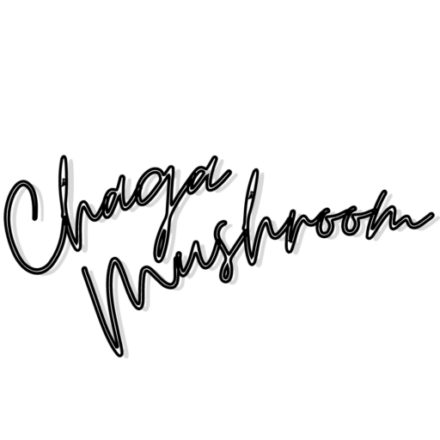To provide you with valuable information, we’ve searched the web for the most frequently asked questions about chaga. If you couldn’t find an answer to your question, please let us know and we’ll get back to you!
chagamushroom.co.uk team
What is chaga mushroom?
Chaga is a polypore fungus that grows mainly on birch trees in cold climates. It grows on living trees, but it is parasitic. Chaga mushroom is also known as Chaga mushroom fungus, wild Chaga, Russian Chaga, Siberian Chaga, Canada Chaga, Cinder conk, Clinker polypore, Birch conk and more.
How does chaga look like?
Chaga grows from the side of the tree, like a large blackish-brown tumor. The appearance is much like that of a burl, and there is often quite a lot of confusion among new foragers mistaking burls for chaga. On the outside, the chaga looks like burnt charcoal, and on the inside, it resembles a golden brown or amber-colored woody material.
What is chaga mushroom good for?
Chaga mushroom contains a large number of polysaccharides in the form of β glucans, which have a strong antioxidant activity inside your body. These compounds help fight off free radicals and maintain a normal cell cycle. Also, they act as prebiotics to stimulate the growth of healthy gut microbiota. On the Oxygen Radical Absorbance Capacity (ORAC) scale, chaga is an ultra-potent source of antioxidants and is naturally rich in betulinic acid. On a cellular level, chaga mushroom extract helps guarantee normal vital functions.
Is chaga safe?
Chaga is safe, having no narcotic effect. Yet if you suffer from an autoimmune disease, you might want to consult a doctor. The mushroom could interact with certain drugs, especially insulin and blood thinners.
How big does chaga get?
Chaga can be anywhere from 2.5cm, as it starts to grow, to over 30cm in diameter. The growth rate depends on the conditions, but in general, it takes around 5 years to get to around 30cm in diameter.
How to find chaga?
Chaga mushroom can be found in the northern deciduous forests.
What trees does chaga grow on?
Typically you’ll find chaga growing on birch trees (all species), but can also be found on elm, beech and hornbeam. Commonly growing between 0.5 and 3 meters from the ground. Chaga is parasitic on birch, and will eventually kill the host tree.
What does chaga consist of?
CHAGA CONSISTS OF:
- 13.2% water
- 2.40% proteins
- 2.40% lipids
- 1% ash
- 71.9 % carbohydrates (lignin 32.6%; beta-glucans 12.0%)
- Ergosterol
- 2.98% K
- 0.02% Na
- 0.06% Ca
- Mn* (Percentage wasn’t specified, but estimated to be around 110ppm)
The total energy is 159.4 kcal/100 g
Where can I get chaga?
There are two main ways – harvesting it yourself or buying from someone. Chaga is a fungus that typically grows on birches. Bear in mind not all chaga is naturally grown.
How to harvest chaga?
Chaga can be harvested by anyone, you may use an ax, a knife or try to use your bare hands to force the mushroom from the tree.
How to store chaga?
It’s easy to store chaga, simply keep it away from damp environments. Best to leave it in a glass jar or a cardboard box, away from sunlight and humidity.
How long does it take to feel the effects of chaga?
Unfortunately you won’t feel any immediate effects from consuming chaga. The benefits accumulate over time, with long-term use.
How to make chaga extract?
Chaga extract is the most common way to prepare chaga. The difference between a tincture and an extract is that tincture should be made from double extraction and therefore it has a higher concentration of ingredients. Making a tincture requires some patience, check out the recipe here.
Can you eat raw chaga?
Raw chaga does no harm, feel free to try it out whilst coming across the mushroom in the wild.
What is chaga used for?
Chaga has been used for centuries for treating and preventing different diseases. The mushroom has been most sought-after for it’s ability to prevent cancer. Chaga kills cancer cells in studies with mice, and in tissue cultures. Considered a superfood, chaga helps to improve your bodies vitality and health.



